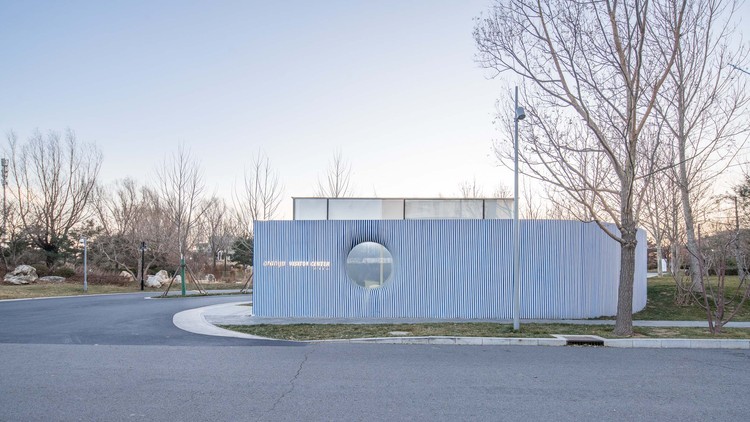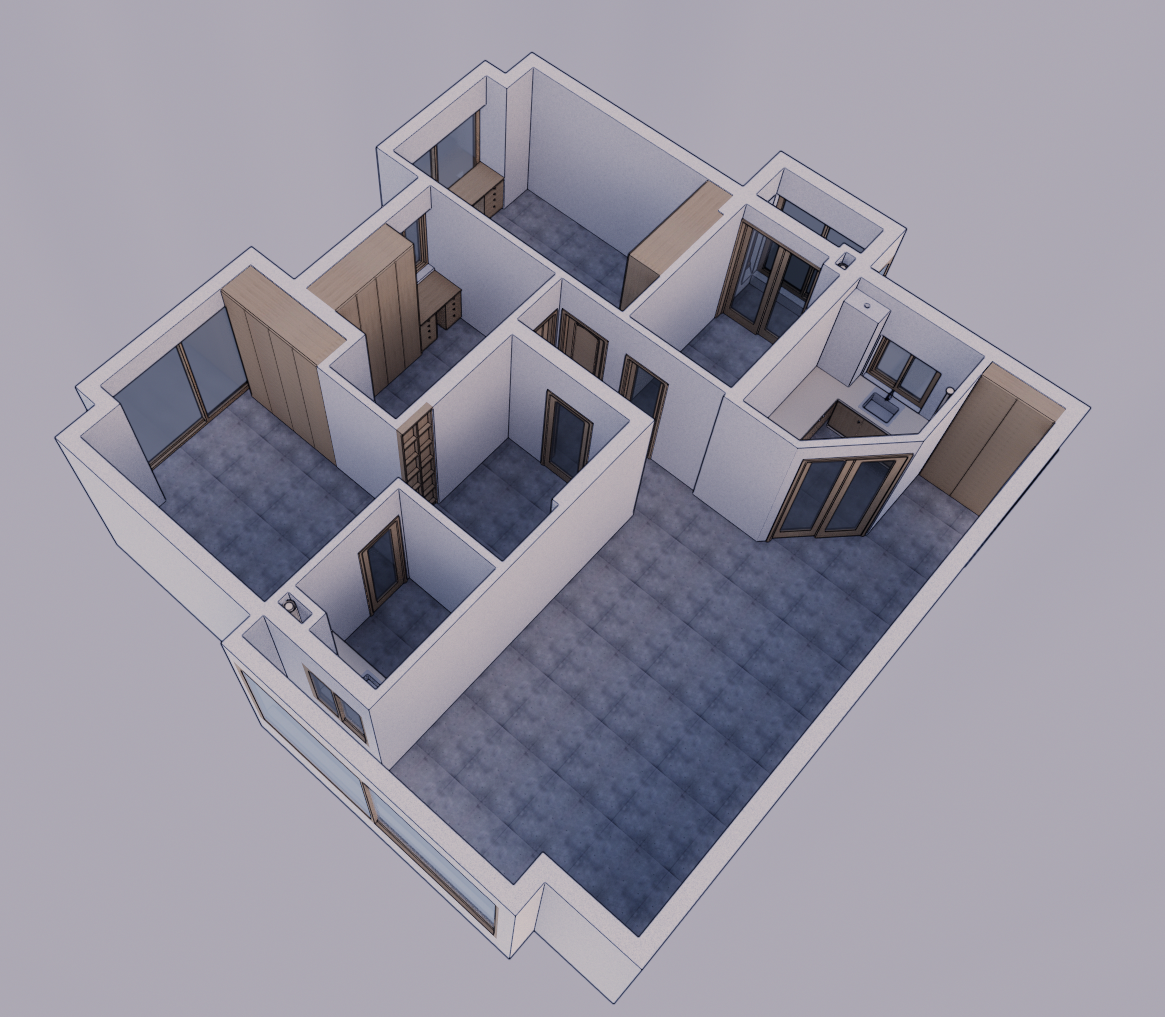Pompidou Metz Restaurant Extension Studiolada Architects
2016-07-01 13:00
© Luis Diaz Diaz
路易斯·迪亚兹·迪亚兹


架构师提供的文本描述。完成于2010年,庞皮杜梅茨中心由Shigeru潘基文设想迅速成为一个建筑图标,不仅为梅茨市,也为该地区,甚至国家。鉴于参观博物馆和餐厅的游客人数众多,在露台上有更多室内用餐空间的需求很快就变得明显起来。然而,对现有建筑进行干预的想法并不会对建筑完整性产生重要影响-这种干预确实会改变现有结构的面积和体积。
Text description provided by the architects. Finished in 2010, the Pompidou Metz center imagined by Shigeru Ban quickly became an architectural icon not only for the city of Metz, but also for the region and even the country. Given the important number of visitors to the Museum and the restaurant, the need for more inside eating space on the terrace soon became apparent. However, the idea of intervening on an existing building does not come without important implications regarding architectural integrity ― the intervention will indeed modify the façaces and volumes of the existing structure.
© Luis Diaz Diaz
路易斯·迪亚兹·迪亚兹


如何在蓬皮杜梅茨中心考虑和建造100平方米的扩建?一根“羽毛”,与那幢豪放而巨大的建筑相比。对这幅杰作进行干预的最佳方式是什么,应该采取什么样的定位?
How can a 100 sqm extension be thought and built onto the Pompidou Metz Centre? A mere “feather” compared to the bold and colossal building. What would be the best way to intervene on a masterpiece such as this one, and which positioning should be adopted?
© Luis Diaz Diaz
路易斯·迪亚兹·迪亚兹


我们的反应是与现有的架构保持距离和分离。从我们的观点来看,这种独立性仍然是解决同一性和共存体系结构间融合问题的最佳方法。我们的方法力求精确和优雅,因为我们深深尊重Shigeru潘基文的工作。我们增加的建筑尊重其遗产和特征,同时赋予它具体的意义和特征。
Our response was to distance and detach ourselves from the existing architecture. This independence remains, from our point of view, the best way to solve issues of identity and amalgam between coexisting architectures. Our approach strives to be precise and elegant, as we deeply respect Shigeru Ban’s work. Our addition to the building respects its heritage and character, while at the same time giving it specific meaning and identity.




这卷书是由玻璃石组成的,清澈而轻盈,使得它在建筑词汇和材料选择(即使用木材、白色大形状和框窗)方面与博物馆大相径庭。外观,抽象的和无形的,是通过反射形成清晰的形状。屋顶似乎不存在,因为它的边缘被窗户遮住了.三十三个薄薄的白色叶片形成一个包围结构周围的隔间。新房间对我们来说并不是一种延伸,而是一种似乎能避免与其周围环境接触的自主物体。博物馆的完整性被保存下来,因为新的结构只是放在适当的位置-如果需要的话,有一天可以很容易地拆除。
The volume is formed of a glass monolith, clear and light ― making it radically different from the Museum in terms of architectural vocabulary and choice of materials (i.e. the use of wood, large white shapes and framed windows). The façades, abstract and intangible, are materialised by the reflections forming onto the clear shapes. The roof seems to be non-existent, as its edge is hidden by the windows. Thirty-three thin white blades form an enveloping structure around the compartment. The new room does not strike us as an extension, but as an autonomous object appearing to avoid contact with its environment. The museum’s integrity is preserved as the new structure simply sits in place ― and could one day be easily removed, if need be.
© Luis Diaz Diaz
路易斯·迪亚兹·迪亚兹


新建筑所营造的氛围是由露台及其周围形成的一个缩影。虽然构成建筑容量测量的线条简单而纯净,但在材料选择方面,我们选择了一种更大胆的方法;三名当地工匠被邀请参与该项目,以努力将该建筑与洛林地区连接起来。
The atmosphere created by the new architecture is a microcosm formed with the terrace and its surroundings. Although the lines forming the architectural volumetry are simple and pure, we have chosen to a bolder approach when it comes to the choice of materials; three local artisan trades were invited to work on the project, in an effort to connect the building with the Lorraine region.
© Luis Diaz Diaz
路易斯·迪亚兹·迪亚兹


玻璃和水晶由来已久,洛林地区一直以掌握玻璃和水晶制造的艺术而闻名于世。
Glass and Crystal Throughout the ages, the Lorraine region has been renowned for mastering the art of glass and crystal manufacturing.
© Luis Diaz Diaz
路易斯·迪亚兹·迪亚兹


新空间的立面由大体积的玻璃制成,其中一些是弯曲的,用圆点云团固定在金属框架上。闪亮的圆形可以看作是对埃米尔·加莱、达姆、巴卡拉特、圣路易斯和梅森塔尔在洛林地区的玻璃制造技术的赞扬。
The façades of the new space are made of large glass volumes, some of which are curved and held together onto the metallic frame by a cloud of dots. The shiny rounded shape can be seen as a tribute to the glass-making expertise represented in the Lorraine region by Emile Gallé, Daum, Baccarat, Saint Louis and Meisenthal.
© Luis Diaz Diaz
路易斯·迪亚兹·迪亚兹


从伦纳维尔到圣克莱门特和隆维的陶瓷和陶器、陶瓷、搪瓷和陶器制作艺术也是洛林地区的一项重要文化遗产。在我们选择地板时,我们可以找到这个行业的参考,它形成了一个在露台和餐厅地板之间的完美连续的模式。
Ceramic and Earthenware From Lunéville to Saint Clément and Lonwy, the art of ceramic, enamel and earthenware making has also been an important cultural heritage of the Lorraine region. We can find a reference to this trade in our choice of flooring, which forms a perfectly continuous pattern running between the terrace and the floor of the restaurant.
© Luis Diaz Diaz
路易斯·迪亚兹·迪亚兹


纺织业和纺织业的发展也是19世纪和20世纪Vosges地区纺织工业的发展。我们对编织技术的奇点所产生的图案特别感兴趣,它们使织物如此独特。在需要的时候,有一个大的白色窗帘来包裹和遮住里面的空间,特别是为了避免阳光直射或过热的问题。这一独特的作品是在Gerarmer(Vosges地区)的“Maison Garnier Thiébaut”讲习班上编成的。白色织物只在一定的角度上,通过白线不同的光泽状态,微妙地、几乎不知不觉地揭示了它的几何图案。
Textile and weaving The development of the textile industry in the Vosges region through the 19th and 20th century is also exploited. We were particularly interested in the patterns generated by the singularities of the weaving techniques, which make the fabric so distinctive. A large white curtain is there to envelop and shelter the inside space when required, notably to avoid direct sunlight or over-heating problems. This unique piece of work was weaved in the workshops of the “maison Garnier Thiébaut” in Gerarmer (Vosges region). The white fabric reveals its geometric pattern subtly and almost imperceptibly at certain angles only, through different states of shininess of the white thread.
© Luis Diaz Diaz
路易斯·迪亚兹·迪亚兹


通过这三种不同的表面(玻璃、地板和面纱),洛林的三种传统行业发现,他们既团结一致,又面临着与平面设计师摩根·福特姆(Morgan Fortems)合作创作的当代图案矩阵。
Through these three different kinds of surfaces (glazing, flooring and veiling), the three Lorraine traditional trades find themselves both united and confronted by the contemporary graphic matrix of the pattern, created in collaboration with the graphic designer Morgan Fortems.






















































Architects Studiolada Architects
Location 1 Parvis des Droits de l'Homme, 57000 Metz, France
Category Extension
Architect in Charge Christophe Aubertin
Partner architect Benoît Sindt ― Studiolada Architects
Area 100.0 m2
Project Year 2015
Photographs Luis Diaz Diaz
Manufacturers Loading...































